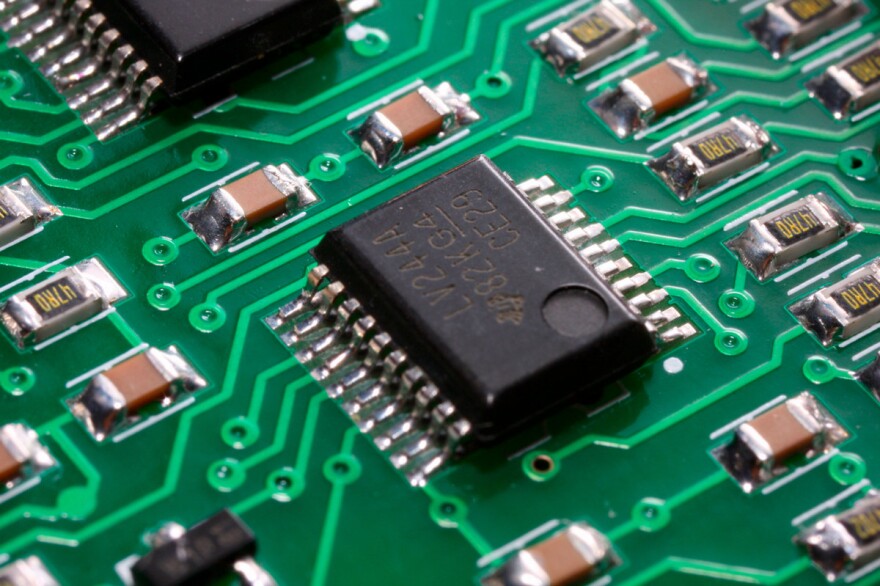At the heart of every modern computer is a computer chip; a small flat piece of silicon upon which electronic circuits consisting of billions of tiny electrical switches are etched. Silicon is useful for this purpose because it is a semiconductor. A semiconductor is a substance with special properties that allow it to control the flow of electricity, and act as a switch. These properties can be controlled by adding traces of other substances.
Over the decades, researchers have made continual progress in increasing the number and the speed of tiny semiconductor switches that can be placed on silicon chips, with the number of switches on a chip typically doubling every two years. This improvement has been central to the computer revolution. But now, this progress appears to be reaching its limits. Physicists are searching for new materials with better semiconductor properties so that computers can continue to improve.
In 2024 an international team of researchers based in the United States and China announced a major breakthrough in this quest. They succeeded, for the first time, in making a stable semiconductor out of a material called graphene that promises to allow much faster switching. Graphene is made of carbon atoms bonded together in a single flat layer. The researchers grew the graphene sheet in a special furnace, and added other substances to the mix to give it the needed properties.
The new material has superior properties. It can be used to make computer chips with much faster switches, that generate less waste heat than silicon chips. More research is needed before the first graphene computer chips will be ready.
Reviewer: James M. Tour, Rice University
Read more
- Reducing the power consumption of computers
- Why we must recycle the rare earth metals
- Your Pong opponent is a dish of braincells
Sources
- ScienceDaily - Functional semiconductor made from graphene
- Georgia Tech - Researchers create first functional semiconductor made from graphene
- SCMP - Chinese, US scientists create world's first graphene semiconductor in feat that could transform computer chips
- DW - Faster computers: First graphene semiconductor paves the way
- Medium - World's first functional graphene semiconductor unveiled
- Cosmos - New graphene semiconductor steps towards ultra-fast computers
- Nature - Ultrahigh-mobility semiconducting epitaxial graphene on silicon carbide
At the heart of every modern computer is a computer chip; a small flat piece of silicon upon which electronic circuits consisting of billions of tiny electrical switches are etched. Silicon is useful for this purpose because it is a semiconductor. A semiconductor is a substance with special properties that allow it to control the flow of electricity, and act as a switch. These properties can be controlled by adding traces of other substances.
Over the decades, researchers have made continual progress in increasing the number and the speed of tiny semiconductor switches that can be placed on silicon chips, with the number of switches on a chip typically doubling every two years. This improvement has been central to the computer revolution. But now, this progress appears to be reaching its limits. Physicists are searching for new materials with better semiconductor properties so that computers can continue to improve.
In 2024 an international team of researchers based in the United States and China announced a major breakthrough in this quest. They succeeded, for the first time, in making a stable semiconductor out of a material called graphene that promises to allow much faster switching. Graphene is made of carbon atoms bonded together in a single flat layer. The researchers grew the graphene sheet in a special furnace, and added other substances to the mix to give it the needed properties.
The new material has superior properties. It can be used to make computer chips with much faster switches, that generate less waste heat than silicon chips. More research is needed before the first graphene computer chips will be ready.


